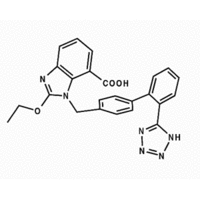Arrieta A, Arguedas A, Fernandez P, et al. High-dose azithromycin versus high-dose amoxicillin-clavulanate for treatment of children with recurrent or persistent acute otitis media. Antimicrob Agents Chemother 2003; 47:3179-3186.
* BACKGROUND
High-dose amoxicillin-clavulanate is recommended for children with acute otitis media (AOM) who have not improved on previous treatment or have had recent antimicrobial exposure. (1) Azithromycin is an alternative only for patients with documented allergy to beta-lactam antibiotics.
* POPULATION STUDIED
The authors studied 304 patients aged between 6 months and 6 years with recurrent or persistent AOM. A0M was diagnosed by the presence of at least 2 of the following: decreased or absent mobility of the tympanic membrane, yellow or white discoloration, opacification, or acute perforation with purulence. In addition, 1 of the following had to be present to make the diagnosis: ear pain within 24 hours, hyperemia of the tympanic membrane, or bulging of the tympanic membrane.
Recurrent AOM was defined as at least 1 episode within 30 days of enrollment, 3 or more episodes within 6 months of enrollment, or at least 4 episodes within 12 months of enrollment. Persistent AOM was defined as the presence of signs and symptoms after at least 48 hours of antibiotic treatment. Sixty-eight percent of children had recurrent AOM and 19% had persistent AOM; the remainder had both. Forty-three percent of patients had their first episode of AOM before 6 months of age.
* STUDY DESIGN AND VALIDITY
Patients were enrolled into the trial in 13 US and 5 Latin American centers. Patients were randomly assigned to receive high-dose amoxicillin-clavulanate at 90/6.4 mg/kg/d for 10 days plus azithromycin placebo or high-dose azithromycin, 20 mg/kg/d, for 3 days plus amoxicillin-clavulanate placebo. Clinical, otoscopic, and safety assessments were made at baseline, after 2 weeks, and at the end of the study (days 28-32). Additionally, tympanocentesis was performed before the study drug was administered and pathogens from middle-ear fluid samples were isolated and identified.
Both patients/caregivers and investigators were blinded to treatment assignment. Allocation concealment was not mentioned. Analyses were performed by intention-to-treat. Of 304 patients, 4 were excluded from the safety analysis (no reason given). Of the remaining 300 patients, 4 were excluded from analysis due to incorrect diagnosis or because they did not meet inclusion criteria.
The percentage of children attending day care was similar in both treatment groups. Numbers of patients with persistent AOM, recurrent AOM, or both were not different between groups. (Level of evidence: lb)
* OUTCOMES MEASURED
The primary endpoint of the study was clinical response (cure, improvement, or worsening) at day 28 to 32. The secondary endpoint was clinical response at days 12 to 16. Adverse effects were also recorded.
* RESULTS
After 1 month, the clinical response rate (cure or improvement) of azithromycin was slightly greater than amoxicillin-clavulanate--72% vs 61%, respectively (P=.047, number needed to treat=9). At days 12 to 16, clinical success rates were similar between the 2 groups (about 85%).
With children in whom a bacterial pathogen was identified (55%), clinical success rates did not significantly differ. The incidence of diarrhea was higher in the amoxicillin-clavulanate patients (29.9% vs 19.6%; number needed to harm=10; P=.045).
* PRACTICE RECOMMENDATIONS
Use high-dose azithromycin for 3 days if antibiotics are needed, instead of a 10-day course of high-dose amoxicillin-clavulanate for the treatment of recurrent or persistent acute otitis media. For every 10 children using azithromycin instead of amoxicillin-clavulanate, there is 1 additional clinical cure at 1 month and 1 less episode of diarrhea. However, no difference in clinical success is seen at 2 weeks.
REFERENCE
(1.) Hoberman A, Marchant CD, Kaplan SL, Feldman S. Treatment of acute otitis media consensus recommendations. Clin Pediatr (Phila) 2002; 41:373-390.
DRUG BRAND NAMES Amoxicillin/clavulanate * Atacand Azithromycin * Zithromax Donepezil * Aricept Galantamine * Reminyl Ipratropium * Atrovent; Apo-Ipravent Rivasfigmine * Exelon
Adrienne Z. Ables, PharmD, and Petra K. Warren, MD, Spartanburg Family Medicine Residency Program, Spartanburg, SC. E-mail: aables@srhs.com.
COPYRIGHT 2004 Dowden Health Media, Inc.
COPYRIGHT 2004 Gale Group



